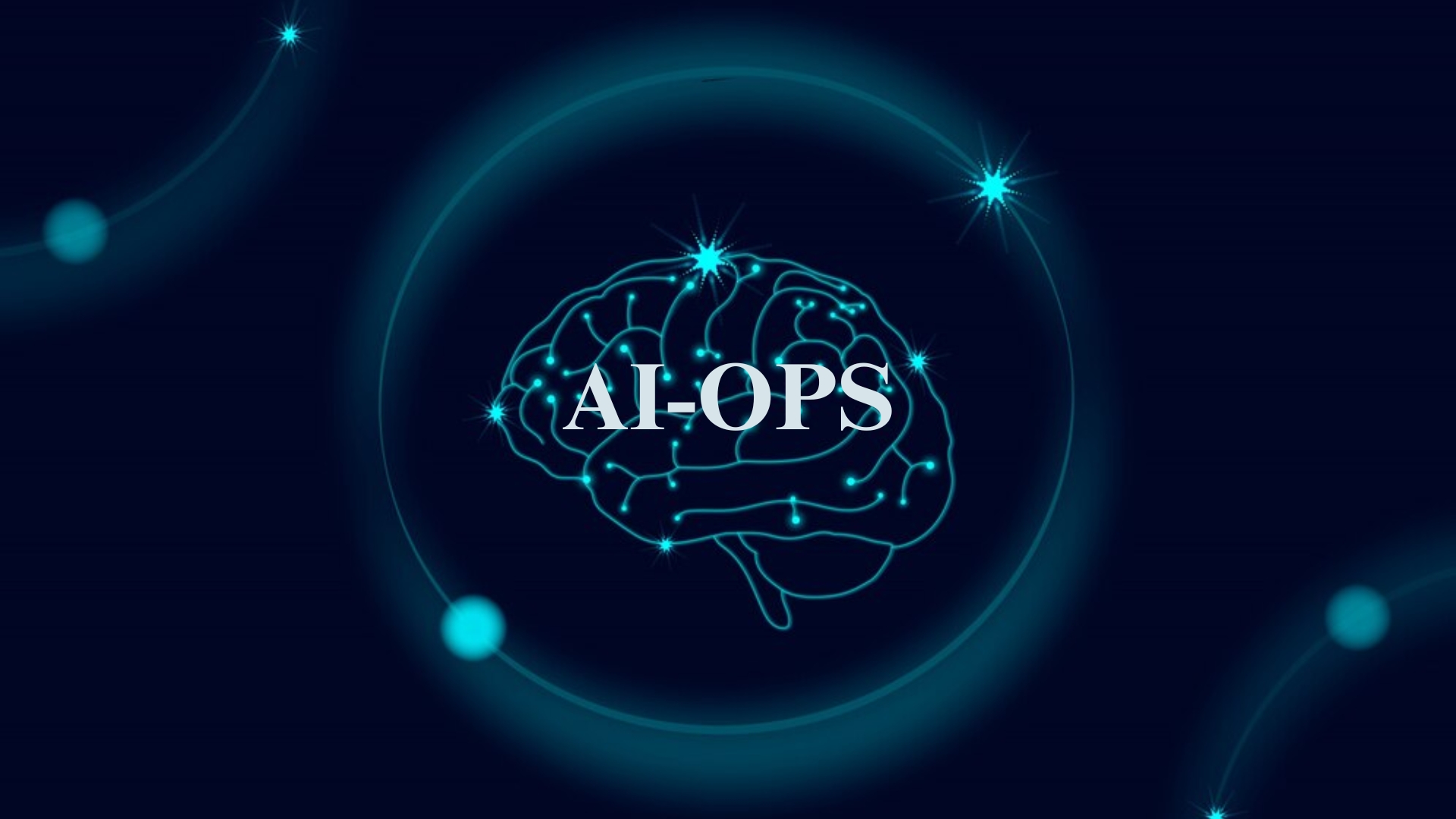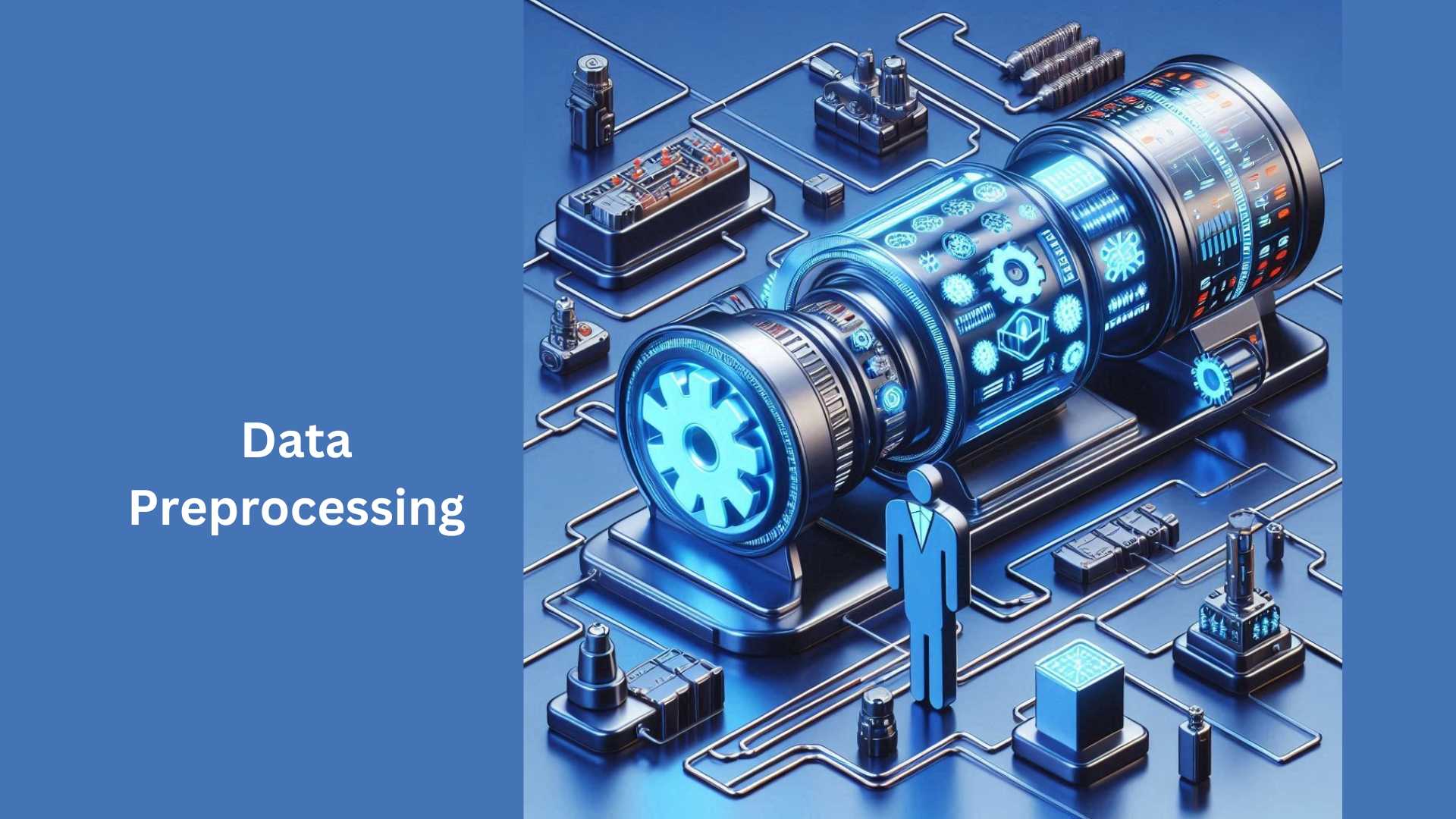In the rapidly evolving realm of IT operations, proactively addressing challenges and ensuring uninterrupted performance is of utmost importance. AIOps, a transformative methodology introduced by Gartner, harnesses the power of artificial intelligence (AI) to reshape the landscape of IT operations management. This piece explores the fundamental principles of this, tracing its journey of implementation, highlighting key features, enumerating its benefits, and shedding light on the underlying mechanisms that position it as a pivotal force in the era of digital transformation.
In the swift domain of IT operations, the need to anticipate issues and guarantee seamless functionality takes center stage. AIOps, a groundbreaking strategy coined by Gartner, taps into the potential of artificial intelligence (AI) to redefine the landscape of IT operations management. This article navigates through the fundamental concepts of AIOps, tracing its path to implementation, elucidating key features, outlining its advantages, and unveiling the intrinsic mechanisms that establish it as a driving force in the epoch of digital transformation.
AIOps Demystified: Unveiling the Essence of IT Operations
AIOps, an abbreviation for Artificial Intelligence for IT Operations, signifies the seamless integration of AI technologies, including natural language processing and machine learning models, into IT operations workflows. The core objective is to automate and also optimize operational processes, empowering IT teams to maneuver through the intricacies of contemporary IT environments efficiently.
Incorporating advanced AI capabilities, brings about a transformative shift, enhancing the efficiency of IT operations. This fusion enables a more streamlined and also automated approach to navigate the challenges posed by modern IT landscapes.
As a result, organizations can expect increased operational efficiency and improved responsiveness to the evolving demands of digital landscapes. It catalyzes operational excellence, leveraging the power of AI to drive efficiency and effectiveness in managing IT processes.
AIOps Essentials: Core Components for Efficient Operations
AIOps: Unleashing Data, Analytics, and ML for Efficiency:
Data Collection and Aggregation: Navigating the Data Deluge
- AIOps serve as a powerful ally in conquering the challenge posed by the sheer volume of data originating from IT infrastructure components, application demands, performance-monitoring tools, and also service ticketing systems.
- In this era of digital abundance, the ability to manage and derive meaningful insights from this wealth of information is paramount. AIOps stepped into this role by not only collecting but also aggregating data.
- Imagine it as a skilled curator, meticulously organizing disparate data streams into a cohesive narrative. The result is a comprehensive overview of the entire IT environment, providing a panoramic view that serves as the foundation for informed decision-making.
Signal Identification: Cutting Through the Noise with Precision
- In the vast landscape of IT data, discerning meaningful signals from the noise is a critical task. It rises to this challenge with its intelligent signal identification capabilities. Picture AIOps as a vigilant sentinel, diligently sifting through the noise to pinpoint significant events and patterns.
- These events may hold the key to understanding and resolving issues related to application performance and availability. This ability to cut through the clutter is not just about efficiency; it’s a strategic move toward swift issue resolution.
- AIOps become the guiding compass, leading IT teams to focus their efforts precisely where they are needed, optimizing resources, and minimizing downtime.
Root Cause Diagnosis and Reporting: Bridging the Gap to Seamless Performance
- Identification is just the beginning; the true power of this lies in its capability to diagnose root causes and report them effectively. This transformative step goes beyond merely flagging issues; it delves into the heart of the matter. AIOps acts as a diagnostician, uncovering the underlying reasons behind performance glitches.
- Once identified, these root causes are reported to both IT and DevOps teams, initiating a collaborative response. In some instances, AIOps can go a step further and also autonomously resolve issues. This automated intervention becomes the bridge between the intricate IT landscape and also the user’s expectations for uninterrupted application performance.
- It’s not just about fixing issues; it’s about doing so proactively, ensuring a seamless experience for end-users.

AIOps Implementation: Orchestrating IT for Efficiency:
The journey to AIOps varies across organizations. To successfully incorporate AIOps tools, consider the following key features:
Observability:
- AIOps tools are pivotal in ensuring observability within IT ecosystems, actively ingesting, aggregating, and scrutinizing performance data derived from distributed applications and underlying hardware. While these tools may not directly resolve IT issues, they impart invaluable insights, fostering a comprehensive perspective encompassing applications, infrastructure, and networks.
- By offering a holistic view, AIOps tools empower organizations to make informed decisions, enhancing overall operational efficiency. This proactive approach, rooted in comprehensive observability, facilitates a streamlined IT management process, optimizing performance and responsiveness.
Predictive Analytics:
- An integral facet of AIOps lies in its adeptness at scrutinizing and also correlating data to yield predictive insights and facilitate automated actions. By employing predictive analytics, organizations can proactively identify and address potential issues before they intensify, thereby minimizing downtime. This encompasses the automation of anomaly detection, issuance of timely alerts, and provision of solution recommendations.
- This proactive approach not only enhances operational efficiency but also significantly mitigates the impact of disruptions. Embracing predictive analytics within the AIOps framework ensures a swift and preemptive response to evolving IT challenges, aligning seamlessly with the demands of dynamic digital landscapes.
Proactive Response:
- AIOps solutions, armed with predictive algorithms, take a proactive stance against unforeseen events like slowdowns and also outages. Through intelligent automation, this approach significantly enhances Mean Time to Detection (MTTD), ensuring swift issue resolution.
- By preemptively identifying and addressing potential disruptions, organizations can optimize operational efficiency, minimize downtime, and also deliver an uninterrupted user experience. This predictive, automated strategy empowers IT teams to stay ahead of challenges, showcasing the transformative impact of AIOps on operational agility and also overall performance management.
AIOps Benefits: Transforming Operations for Efficiency:
The adoption of AIOps yields a range of benefits for organizations
Faster Mean Time to Resolution (MTTR):
- AIOps swiftly navigate the complexities of IT operations, pinpointing root causes and suggesting solutions with unparalleled speed compared to manual approaches. This results in a substantial decrease in the mean time to resolution (MTTR), a fact exemplified by companies such as Vivy, showcasing a remarkable 66% reduction in MTTR.
- This accelerated problem-solving not only enhances operational efficiency but also underscores the transformative impact of AIOps in expeditiously addressing IT challenges. Embracing AIOps emerges as a strategic imperative, enabling businesses to streamline operations and achieve unprecedented efficiency gains.
Lower Operational Costs:
- Efficient AIOps bring about the automatic identification of operational issues, leading to the reduction of operational costs. Through the implementation of re-programmed response scripts, organizations can optimize resource allocation, enabling staff to concentrate on innovative tasks.
- This not only streamlines operations but also elevates the overall employee experience. By automating issue resolution, AIOps creates a pathway for teams to shift their focus from mundane tasks to more creative and strategic endeavors. This dual impact of cost reduction and enhanced employee satisfaction positions AIOps as a transformative force in modern IT operations.
Improved Observability and Collaboration:
- AIOps significantly enhances collaboration among DevOps, ITOps, governance, and security functions by seamlessly integrating with monitoring tools. This streamlined integration facilitates improved visibility and communication, accelerating issue response times.
- Notably, Dealerware’s success story exemplifies the impact of heightened observability, showcasing an impressive 98% reduction in delivery latency. AIOps play a pivotal role by fostering cross-functional synergy and enhancing efficiency within IT operations. It’s a vital asset for organizations, seeking improved responsiveness and optimization of performance through AIOps.
- AIOps is instrumental in creating cross-functional synergy, boosting efficiency within IT operations for enhanced responsiveness. For organizations aiming at improved responsiveness and performance optimization, AIOps stands as a vital asset. AIOps is crucial for organizations, enhancing cross-functional synergy and also efficiency within IT operations for optimal performance.
Transition from Reactive to Predictive Management:
- Empowering organizations to evolve from reactive to proactive and predictive management, this incorporates robust predictive analytics. Through perpetual learning from data, it discerns and prioritizes critical alerts, enabling IT teams to preemptively tackle potential issues before they adversely affect performance.
- This transformative approach not only enhances operational efficiency but also fortifies the IT infrastructure against disruptions. By leveraging AIOps’ predictive capabilities, businesses can strategically navigate the IT landscape, ensuring a seamless and optimized operational environment. Embracing this proactive mindset is key to preempting challenges and fostering a resilient and high-performing IT ecosystem.
Automation of DevOps processes
- Streamlined Deployment: Automating DevOps processes facilitates swift and consistent deployment of software applications across different environments.
- Continuous Integration/Continuous Deployment (CI/CD): Automation enables seamless integration and deployment cycles, ensuring rapid and reliable delivery of code changes.
- Efficient Testing: Automated testing frameworks enable thorough testing of code changes, reducing manual efforts and enhancing software quality.
- Enhanced Monitoring and Alerting: Automated monitoring tools provide real-time insights into system performance, promptly alerting teams to any issues for rapid resolution.
- Resource Optimization: Automation optimizes resource allocation and utilization, improving overall efficiency and reducing operational costs.
Speed and Accuracy of AI in IT Operations
- Faster incident detection: AIOps analyzes vast data streams in real-time, identifying anomalies and potential issues much quicker than humans.
- Improved accuracy in root cause analysis: AI algorithms can sift through complex data sets to pinpoint the exact source of problems, eliminating wasted time troubleshooting.
- Predictive maintenance: AIOps can predict equipment failures before they occur, allowing for proactive maintenance and preventing downtime.
- Reduced human error: Automating repetitive tasks eliminates human error, leading to more consistent and reliable IT operations.
- Continuous learning: AIOps models constantly learn and adapt, improving their Useability to detect and address future issues with even greater accuracy.
Challenges in IT Operations Management
- Data Overload: AIOps thrive on data, but IT teams struggle to manage massive datasets from various tools and infrastructures.
- Limited Expertise: Implementing and maintaining it requires skilled personnel who understand both IT operations and data science.
- Alert Fatigue: AIOps can generate numerous alerts, leading to desensitization and potentially missing critical issues.
- Integration Challenges: Integrating AIOps with existing IT monitoring tools can be complex due to compatibility issues.
- Explainability: Understanding why AIOps suggests certain actions can be challenging, hindering trust and adoption.
AIOps: Unveiling the Mechanics of Operational Intelligence:
To grasp the inner workings of AIOps, it’s essential to understand the role played by each component technology—big data, machine learning, and automation:
Big Data Platform:
- AIOps utilizes a sturdy big data platform to streamline disparate IT operations data. It consolidates historical metrics, real-time events, system logs, network statistics, and incident-related information. Additionally, AIOps integrates application demand trends and infrastructure data seamlessly within its comprehensive platform
- This amalgamation forms a holistic dataset, fostering in-depth analysis. By harnessing this comprehensive information pool, organizations gain valuable insights into their IT landscape, enhancing decision-making processes.
- AIOps’ utilization of a unified data platform promotes synergy among diverse data sources, ensuring a more efficient and informed approach to managing IT operations. This strategic consolidation lays the foundation for proactive and data-driven decision-making in the dynamic realm of IT.
Analytics and Machine Learning:
- Leveraging targeted analytics and machine learning, AIOps meticulously sift through IT operations data. Skillfully isolating noteworthy event alerts, it navigates through the operational noise with precision.
- Adeptly correlating abnormal events with diverse datasets, AIOps identifies root causes effectively. Discerning patterns and emerging trends, it recommends solutions informed by comprehensive data analysis. This process not only enhances the precision of issue identification but also streamlines the problem-solving journey.
- This stands as a beacon of efficiency, harnessing advanced technologies to swiftly navigate the complexities of IT landscapes, ensuring proactive and effective management of operational challenges.
Automation:
- An essential aspect of AIOps lies in its capacity to automate responses, facilitating real-time proactive resolution. By promptly directing alerts to the relevant teams or initiating automatic system responses, it efficiently tackles issues, often resolving them before users become aware.
- This proactive approach not only enhances operational efficiency but also ensures a seamless user experience. The ability to swiftly address challenges, coupled with the seamless automation of responses, positions AIOps as a pivotal solution for organizations aiming to stay ahead in the ever-evolving landscape of IT operations. Embracing AIOps translates to a proactive, responsive, and user-centric IT environment.
Continuous Learning:
- AI models embedded in it exhibit a continuous learning curve, seamlessly adjusting to environmental shifts. This adaptability proves vital for navigating upcoming challenges, especially with the introduction of new infrastructure configurations by DevOps teams.
- This perpetual learning process ensures that AIOps remains at the forefront of anticipating and also addressing evolving IT landscapes. By staying agile and responsive, it empowers organizations to proactively manage changes, fostering a robust and future-ready IT operational framework.
- This dynamic adaptability underscores AIOps’ effectiveness in handling the complexities of modern IT environments, ensuring sustained performance and resilience.
Use of AI insights in IT and network ops
- AI-powered anomaly detection: AIOps scans vast amounts of network data, identifying unusual patterns that might signal trouble before it disrupts users.
- Predictive maintenance: AI analyzes trends to predict potential equipment failures, allowing for proactive maintenance and preventing downtime.
- Automated incident resolution: AIOps can diagnose and even fix common network issues automatically, freeing IT staff for more complex tasks.
- Improved resource allocation: AI analyzes network usage patterns to optimize resource allocation, ensuring smooth performance.
- Enhanced security: AIOps can detect suspicious activity and potential security breaches much faster than traditional methods.
Simplification of IT and network operations
- Auto-remediation: AIOps can automatically diagnose and fix minor issues, freeing IT staff from repetitive tasks.
- Anomaly detection: Machine learning algorithms can identify unusual patterns in network data, pinpointing potential problems before they cause outages.
- Root cause analysis: AIOps cuts through the noise of alerts, analyzing data to pinpoint the root cause of issues quickly, saving valuable troubleshooting time.
- Predictive maintenance: By analyzing historical data and current trends, AIOps can predict equipment failures and schedule maintenance before disruptions occur.
- Improved resource allocation: AIOps provides insights into resource utilization, enabling efficient allocation of IT staff and infrastructure.
Perfect AIOPS: Crafting an Optimal Operational Conclusion
AIOps is the future, enabling organizations to navigate modern IT complexities swiftly and precisely. Faster issue resolution, reduced costs, and enhanced collaboration highlight the undeniable benefits of AIOps. Improved observability and collaboration make AIOps a strategic necessity in the dynamic IT landscape. Businesses, in their digital transformation journey, find embracing AIOps not just a choice but imperative. Staying ahead in IT operations demands strategic adoption of AIOps in the dynamic business environment.
Keywords: AIOps | artificial intelligence | artificial AI | IT operations | digital transformation | predictive analytics | automation | observability | operational efficiency | data aggregation | machine learning | proactive response | continuous learning.









